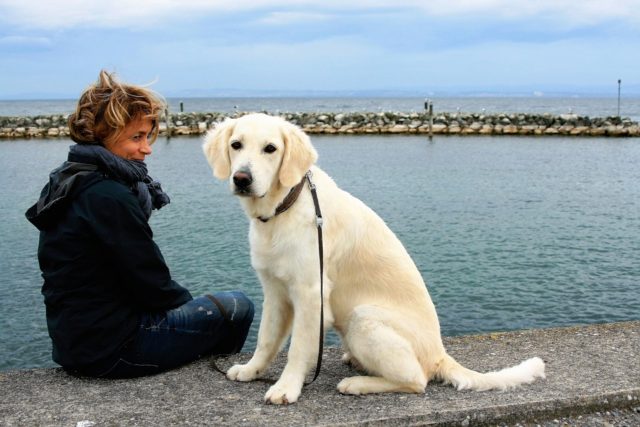The death of a beloved pet is devastating to the entire family, including the other pets in the home. Dogs may not grieve as openly or in the same way we do, but they definitely go through a period of mourning.
During this difficult time it is important to monitor your remaining dog(s) for “distress reactions” and take steps to help them through their grief.
Signs of grief in dogs include:
- Changes in sleeping patterns
- Changes in eating habits
- Lack of interest in normal activities like walks or play
- Reluctance to be alone or away from human family members
- Wandering the house, searching for their lost friend

8 Ways to Help Your Dog(s) Navigate Their Grief:
1. Closely monitor your surviving dog(s).
There is no right or wrong way for humans or animals to grieve, so it’s okay if your dog(s) goes through some of the symptoms above. What matters is that you recognize their distress and react accordingly.

2. Keep daily routines as consistent as possible.
It may be difficult to immediately return to “life as usual” after the loss of a family pet, but dogs rely on consistency in order to feel safe. Do your best to keep mealtimes, walks, playtime and other daily activities on a steady schedule.

3. Monitor appetite closely.
When mourning the loss of a loved one, appetite is often the first thing to be affected. The same is true for our dogs. They can go about 48 hours without eating before you need to be deeply concerned, so resist offering treats or special goodies in place of regular food. Simply offer meals at the regular times until he’s ready to eat normally.
If his appetite doesn’t pick up after a few days, consult your veterinarian.

4. Take care not to inadvertently reward your pet’s depression.
It’s normal to want to offer special attention in times of sorrow, but doing so could reinforce undesirable behaviors like picky eating and anxiety. Instead, try distracting your pooch with positive behavior reinforcement activities like a nice walk or a game of fetch.

 Toledo, United States.
Toledo, United States.